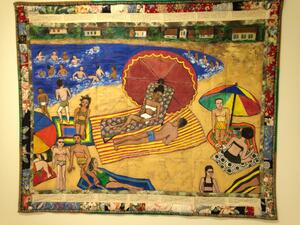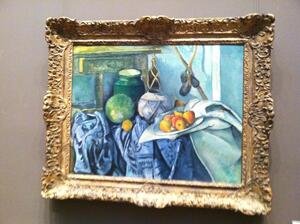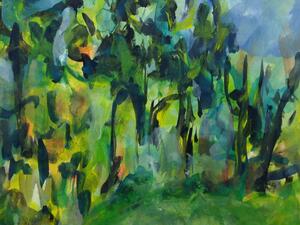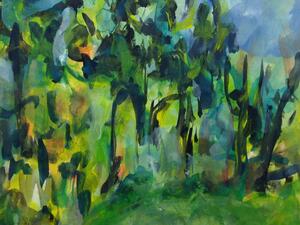Blue of Paul Cézanne
Frederick Project: To Resolve
Wednesday, March 18, 2020

Paul Cézanne, The Bathers 1899/1904, Art Institute of Chicago, detail Rachel Cohen
Yesterday, I wrote about Beauford Delaney’s blue, green, and yellow – the way the blue filters down through the trees; the radiant effect of combined green and yellow. Today, I want to pursue blue.
I’ve taught Rebecca Solnit’s essay on blue from her Field Guide to Getting Lost, and I’ve taught Maggie Nelson on blue in her book Bluets. Blue runs through many fields of study – those two writers and many others have traced its threads in landscape, in vision, in philosophy, memory, sorrow, tranquility.
Today I’d like to think about blue as a color of resolve.
My mind skittered for a bit. But it settled on Cézanne. That is a way to talk about blue and resolve. Which Cézanne? The Bay at L’Estaque here at the Art Institute? That unfinished oil I’ve written about that’s at the Fogg Museum in Cambridge? Or the mountain, St. Victoire, that he painted so often. The St. Victoire my mind is most familiar with is the one at the Metropolitan, with that long slow curve of rising brown. Mont Sainte-Victoire, ca. 1902-1906.
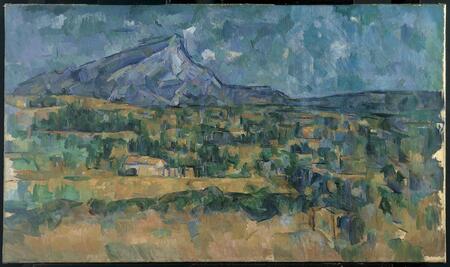
Surely I have photos? A kind of desperation to get to them all, photograph them again with their accumulating areas of blue, the blue over blue. Panic of separation. Forty-five minutes of searching through photos, no, it seems I never took pictures of that. How many hours have I stood in front of it. The reproduction is impressive, the Met allows you to focus in on brushstrokes, but it doesn’t seem like my own impression, I feel it effacing my memory. So not that painting. And not the Bay of Marseille, Seen from L’Estaque c. 1885 at the Art Institute either.
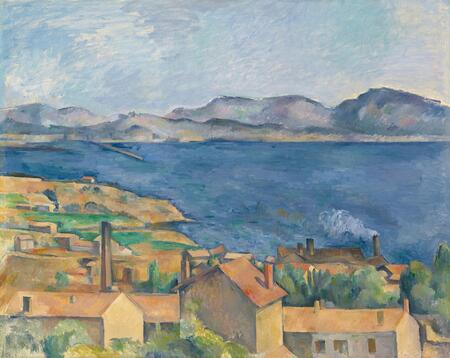
We were to go to France this spring. I was going to see paintings and talk with curators, go to Aix, and see, for the first time, the bay at Estaque, Mont St. Victoire. Small losses; nevertheless, impediments to understanding; better to acknowledge.
Here’s what I can find today. I did photograph the painting that hangs next to the Bay on the wall at the Art Institute. Here is the museum's photo of the The Bathers 1899 / 1904.
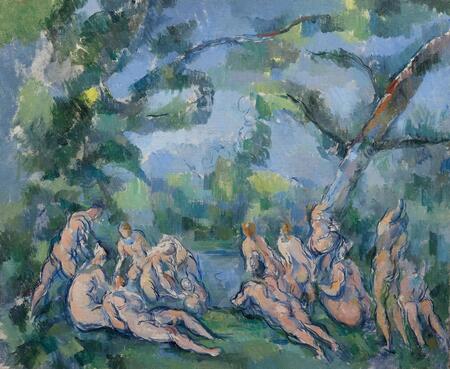
Four photographs.
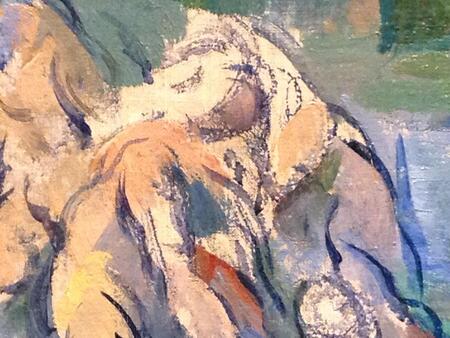
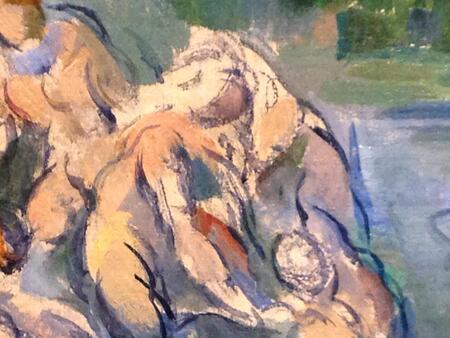
And perhaps this is not so bad. Because you could look at them all day.
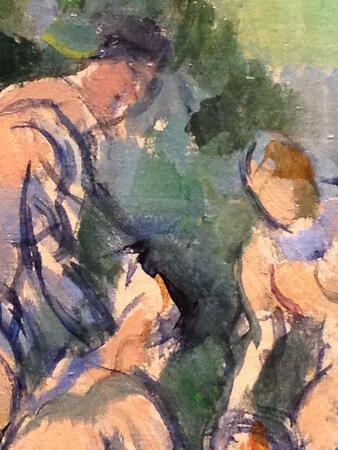
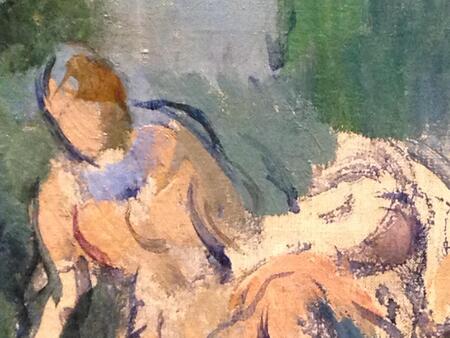
The lines around the figures are of a deep blue, I think it has cobalt in it. Without those lines the figures would dissolve. And blue is also the atmosphere, the air, sky, and water of the painting.
What I want to think about is this. There are two meanings of the word resolve, both from the French resolver. One began in the 14th century. As etymonline has it:
Late 14c., "melt, dissolve, reduce to liquid;" intransitive sense from c. 1400; from Old French resolver or directly from Latin resolvere "to loosen, loose, unyoke, undo; explain; relax; set free; make void, dispel.”
Why is explain with loosen, set free, undo and dispel?
The second meaning came a century later:
From early 15c. as "separate into components," hence the use in optics (1785). Meaning "determine, decide upon" is from 1520s, hence "pass a resolution" (1580s).
Here the sense of determination, the courage and clarity to proceed. This is what I will think about today, and write about again tomorrow – how is Cézanne’s blue holding both of these senses of resolve?
